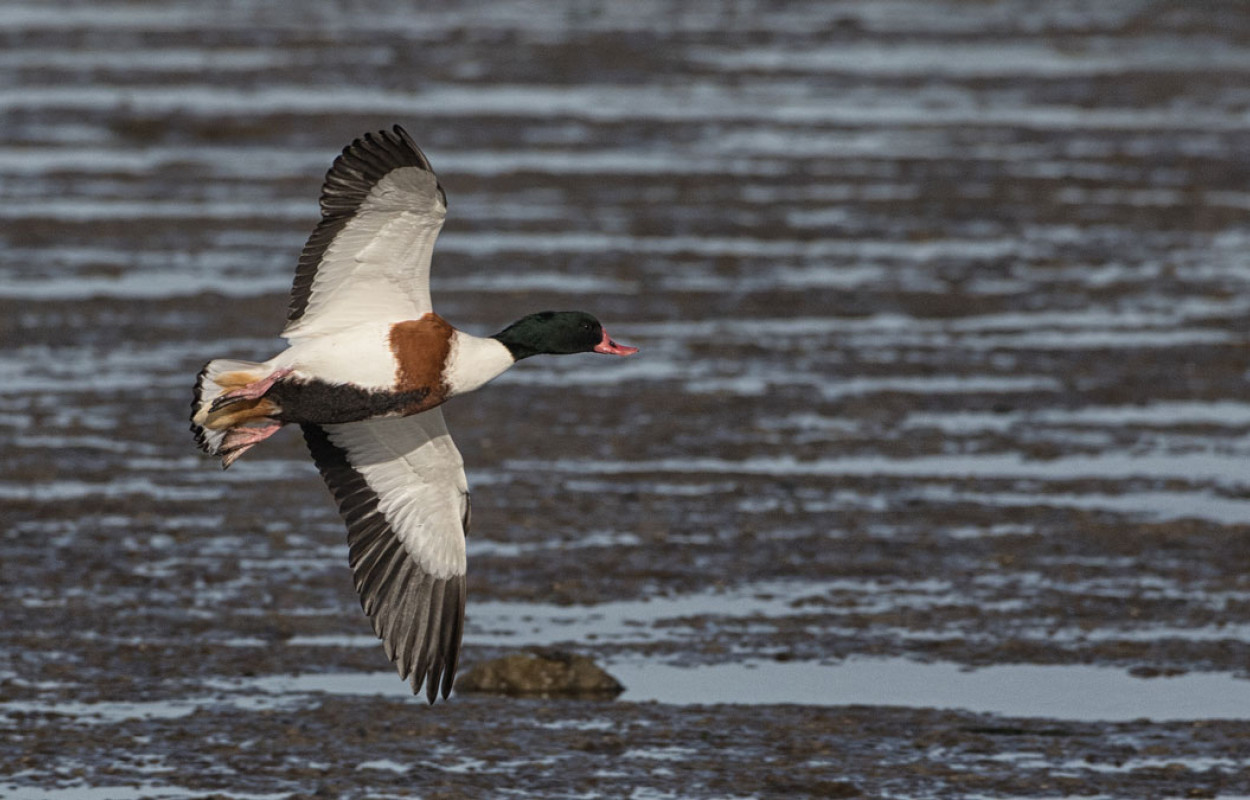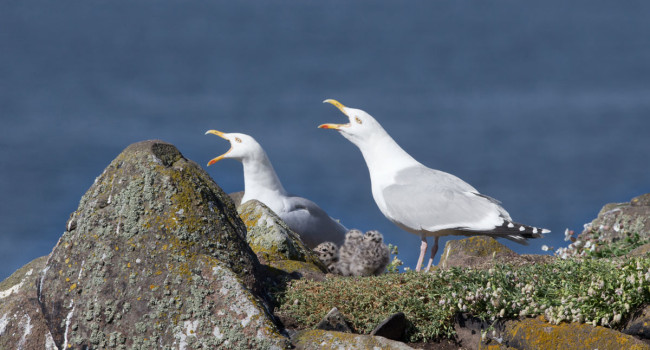Migratory movements of British and Irish Common Shelduck Tadorna tadorna: a review of ringing data and a pilot tracking study to inform potential interactions with offshore wind farms in the North Sea

Author(s): Green, R.M.W., Burton, N.H.K. & Cook, A.S.C.P.
Published: March 2021 Pages: 13pp
Journal: Ringing & Migration
Digital Identifier No. (DOI): 10.1080/03078698.2019.1887670
The majority of British and Irish Shelduck undergo a 'moult migration' to the Wadden Sea every summer after the breeding season. Once there, they replace their old and worn out feathers and become flightless in the relative safety of the Wadden Sea, before returning to Britain and Ireland for the winter. However, in journeying to and from the Wadden Sea, Shelduck must cross the North Sea and navigate its growing number of wind farms. Offshore wind farms are crucial for reducing carbon emissions and mitigating climate change impacts. However, like other bird species, Shelduck might risk colliding with wind turbines during migration, and there is also a potential increased energetic cost if wind farms act as a barrier that they must fly around.
In this pilot study, four Shelduck were captured and fitted with solar powered GPS-GSM tags at the Alde-Ore Estuary Special Protection Area on the Suffolk coast. These tags allow movements to be studied in almost real time, as they download their data over mobile phone networks. Each tagged Shelduck took a separate route across the North Sea, and used previously unreported stopover sites in the Dutch Wadden Sea, before continuing on to moult sites in the Helgoland Bight off the coast of Germany. Interestingly, one bird travelled back and forth between the Dutch and German Wadden Seas four times, adding an extra 1,000 km to its migratory journey. Despite the different routes taken, all the tagged Shelduck ended their migration in almost exactly the same place.

The tags also provided information on Shelduck flight speed and height for the first time. During the crossing, the birds flew at speeds of up to 55 knots, and up to 354 m above the sea's surface. The movements recorded indicated apparent interactions with several wind farm sites, although most of these are currently only at the planning phase. Only one data fix was recorded within an operational wind farm when a bird flew within the Egmond aan Zee wind farm. This Shelduck was flying at a height of 85 m, which would place it at potential risk of collision with spinning wind turbine blades, which sweep an area between 25 and 139 m above sea level. Indeed, the majority of the four Shelducks’ flight occurred below 150 m above sea level, which would place them in the ‘collision risk zone’ of many of the offshore wind farms they may pass through.
This work is going to be built upon as part of a PhD study. This project will involve extending the tagging deployment period beyond the main Shelduck moult and increase the sample size, including birds from a wider geographical range of British breeding sites, as well as Shelduck that breed on the continent but migrate to Britain for the winter. This should help reveal whether Shelduck can adapt to this essential renewable energy infrastructure.
Acknowledgements
Thanks to our funders, the Department for Business, Energy and Industrial Strategy (BEIS) Offshore Energy Strategic Environmental Assessment (OESEA) programme, and particularly to John Hartley of Hartley Anderson Ltd for his support of the work. Thanks also to the staff at RSPB Havergate Island and Mike Marsh for assistance with catching and subsequent monitoring.
Abstract
Offshore wind farms are a key part of the UK government strategy to reduce carbon emissions and mitigate climate-change impacts; however, it is important to understand their potential impacts on wildlife. The majority of British and Irish Common Shelduck Tadorna tadorna undergo a moult migration to the Wadden Sea, passing wind farms in the southern North Sea en route. We conducted a review of ring-recovery data from the British and Irish Ringing Scheme and a pilot tracking study to inform understanding of migration routes. Analysis of recovery data confirmed that British and Irish Shelduck occurred in the Wadden Sea predominantly between August and November, and use moulting sites in the Dutch Wadden Sea and Helgoland Bight. Four Shelduck were successfully tracked from East Anglia to the Wadden Sea. Four separate routes across the North Sea were identified, with previously unreported stopovers noted in the Dutch Wadden Sea, before birds continued on to moult sites in the Helgoland Bight. Flight speeds of 30.3 ± 9.2 knots (n = 299, range 8.7–55.0 knots) were recorded, and altitudes of up to 354 m. An expansion to the tracking study is planned, to increase sample sizes and geographical representation.








Share this page